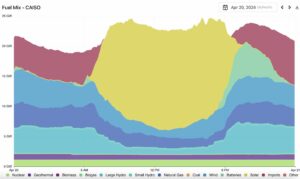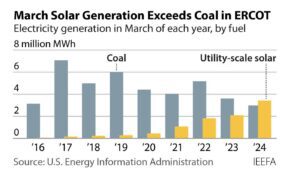Rooftop solar continues to have a dramatic impact on the shape of the power grids in Australia, this week pushing “minimum operational demand” levels to record lows in both Victoria and South Australia.
There is now more than 13GW of rooftop solar on Australiam homes and businesses, and growing at a rate of more than 3GW a year, and it’s changing the demand and supply profile of the country’s main grids.
The Australian Energy Market Operator says Victoria reached a new minimum operational demand record on Sunday of 2,402MW, down from the previous low of 2,529MW set on Christmas Day last year. At the time, rooftop solar provided 47 per cent of underlying demand, compared to 40 per cent on December 25.

In South Australia, the fall was even more dramatic. Minimum operational demand fell by more than 20 per cent to 188MW on Sunday, beating the previous record of 236MW just over a month earlier on September 26.
At the time, rooftop solar supplied 87 per cent (or 1,215MW) of underlying demand, likely a record for aggregate output but just shy of the 88 per cent record a few weeks ago.
That is a dramatic restructure of the way the grid operates, although it is not unexpected. AEMO has predicted that rooftop solar could reach 100 per cent of local demand sometime this spring, when moderate temperatures keep demand relatively low.
That would push “minimum operational demand” to negative territory, one of the reasons why AEMO has introduced new inverter standards that allows it, or its agents, to “switch off” some rooftop solar if needed to maintain grid security.
It’s looking at smarter ways to “orchestrate” rooftop solar and household devices, so it could also create “loads” by switching on appliances. More storage will also be a solution, as well as large loads such as green hydrogen.










